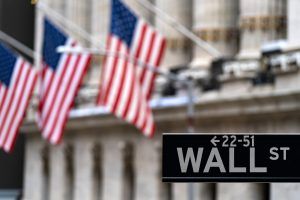Nearly all Financial Analysts Today Agree on One Thing
Posted onWhile the most difficult days of the 2008 global financial crisis are behind us, the reverberations are still felt today.

During that period of financial upheaval central banks took steps to increase the money supply by purchasing government securities. This practice, known as quantitative easing, lowers the cost of money. As a result, banks can lend more freely and relax their terms. Businesses can more easily infuse capital into their enterprise and pursue growth. Quantitative easing was a major tool in the reconstruction effort during the bottom of the economic collapse that has come to define the first decade of the 21st century.
Today, the government is taking steps to walk back from this line.
They are increasing interest rates in a moderate fashion. The cost of money is now increasing. With capital becoming more expensive, businesses are struggling to find other ways to grow. Like a healing ankle sprain, the economy has left the crutches aside and is struggling to walk unassisted. For this reason many analysts expect the coming years to offer only modest stock market returns.
“Market returns on stocks and bonds over the next decade are expected to fall short of historical averages,” remark analysts at Charles Schwab.
As the government takes steps to increase the federal funds rate the available money supply is decreasing. Since the global financial crisis, businesses have grown accustomed to this once inexpensive source of funding and growth. By the start of 2009 this rate was near zero reaching a low-point of just 0.07 percent.
Today, this number has climbed to just over 2.40 percent. Expectations of decreased annual returns in the equity market are a rare point of agreement across organizations. Investment behemoth Vanguard, overseeing more than $4 trillion in invested assets, expect the classic portfolio allocation of 60 percent stock and 40 percent bonds, to deliver two-to-three percentage points less than what we have seen in previous decades.
As with all bad news, there is some good buried within.
These forecasts still leave investors with time to re-tool their asset allocation strategy and position themselves to reach for gains elsewhere when they’re not available in the stock and bond market. For many investors, gold is the answer.
Though interest rates have little, or no correlation to gold prices investors should consider the historical relationship between gold and equity prices. In September 2007 – the dawn of the financial crisis – the S&P 500 stood at 1,539 before falling over 20% by September of 2011. Meanwhile, gold increased from $712 per ounce to $1,778 per ounce over the same period.
The key takeaway is that analysts are united in their opinion that we stand at the beginning of an era of lower-than-average equity returns. This forecast, however, doesn’t mean that investors must resign themselves to the whims of a turbulent market. Instead, this early message offers an opportunity to rebalance portfolios in a way that defrays risk and increases the possibilities for boosting returns.







